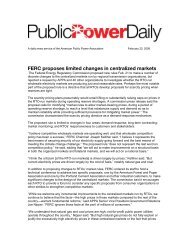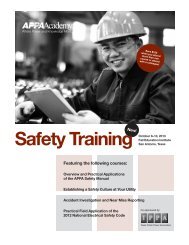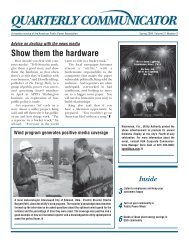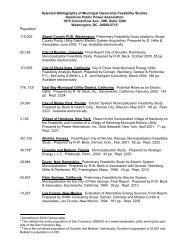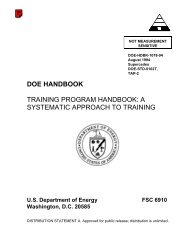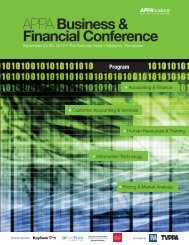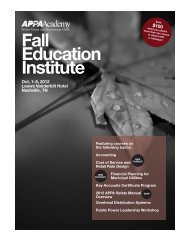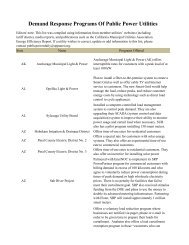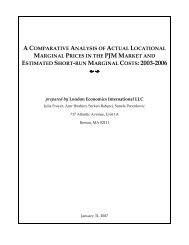Safeguarding Classified and Sensitive But Unclassified Information ...
Safeguarding Classified and Sensitive But Unclassified Information ...
Safeguarding Classified and Sensitive But Unclassified Information ...
You also want an ePaper? Increase the reach of your titles
YUMPU automatically turns print PDFs into web optimized ePapers that Google loves.
End of Day Security Checks will be conducted by a person who has been granted a security<br />
clearance <strong>and</strong> will be recorded on a SF 701, Activity Security Checklist (Form Attached). The SF<br />
701 can be maintained anywhere within the applicable room/area where the classified<br />
information is stored but is often posted in the immediate vicinity of the room/area exit for<br />
convenience <strong>and</strong> to serve as a reminder to the checker.<br />
Additionally, the opening <strong>and</strong> closing of individual safes will be recorded on a SF 702, Security<br />
Container Check Sheet, (Form Attached). The SF 702 will be used to record the date, time, <strong>and</strong><br />
initials each time an individual safe is opened, closed, <strong>and</strong> checked<br />
The following should be included as part of the End-of-Day security check:<br />
Check all containers used for the storage of classified material. Spin the<br />
combination dial at least four times <strong>and</strong> physically pull each drawer to<br />
ensure they are secure.<br />
Check secure telephones to ensure the keys or cards to each unit are not inserted or are not<br />
in the immediate vicinity of the unit.<br />
Visually inspect desktops/wastebaskets for the presence of classified materials.<br />
Visually inspect copiers, fax machines, <strong>and</strong> printers to ensure there are no classified materials<br />
in, on, or near the devices.<br />
Check other items/devices as deemed necessary for your particular office/work area.<br />
Mailing <strong>Classified</strong> <strong>Information</strong><br />
Although there should be limited circumstances where you would have a need to send classified<br />
information through the mail, should the need arise, the following applies:<br />
TOP SECRET material shall NOT be sent through the mail under any circumstances. It must be<br />
transmitted by cleared courier or approved electronic means. Contact DHS OS/ASD.<br />
SECRET or CONFIDENTIAL information may be transmitted by US Postal Service Registered<br />
Mail, or US Postal Service Express Mail. When using US Postal Service Express Mail, Item 11B<br />
of the Express Mail transmittal form, “Waiver of Signature Indemnity,” must not be completed.<br />
The use of external (street side) express mail collection boxes is prohibited. A document receipt,<br />
DHS <strong>Classified</strong> Document Record, will be prepared by the sender <strong>and</strong><br />
attached to the document. See DHS <strong>Classified</strong> Document Record<br />
(Form Attached). The purpose of the receipt is to ensure the intended<br />
recipient receives the materials sent to them. Upon receipt, the<br />
intended recipient shall acknowledge receipt by signing the receipt form<br />
<strong>and</strong> sending it back to the sender. The sender will retain the signed<br />
receipt on file for two years. If the sender does not receive a signed<br />
receipt back from the intended recipient within 20 work days of<br />
shipment, the sender will initiate a tracer to determine the disposition of the sent materials.<br />
Contact DHS OS/ASD for assistance.<br />
<strong>Classified</strong> information transmitted outside a facility, whether by mail or h<strong>and</strong>-carried, will be<br />
double wrapped as explained on Page 16.<br />
Note: <strong>Classified</strong> information shall not be sent through an inter-office distribution system.<br />
16



